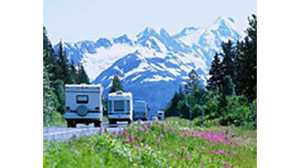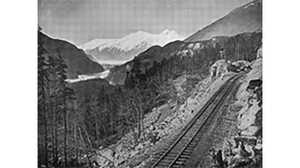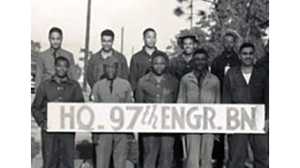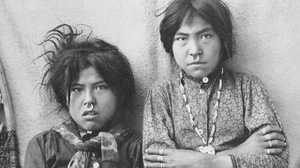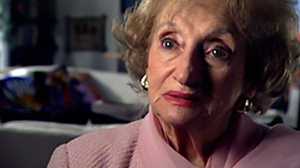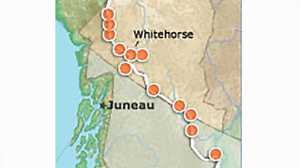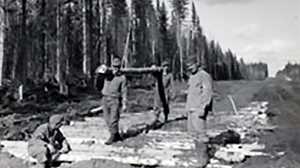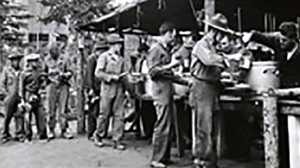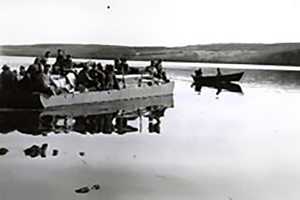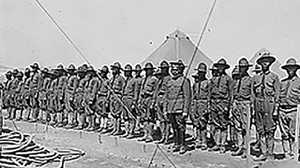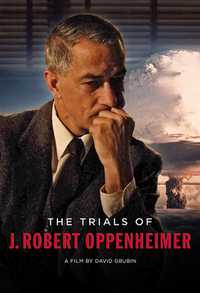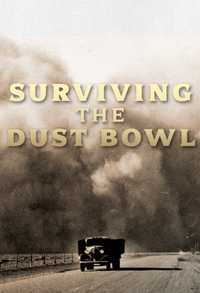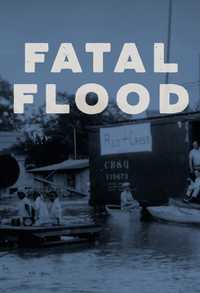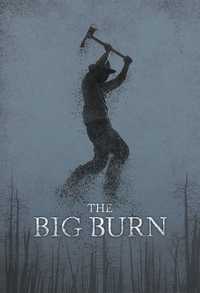NARRATOR: November 20, 1942. On a remote vista in Yukon Territory, several hundred men braved bitter cold temperatures to mark the end of an ordeal few people thought possible: the completion of the 1,500-mile Alaska Highway.
CHARLES HENDRICKS, Military Historian: The building of the Alaska Highway represented one of the great triumphs of the U.S. Army in 1942.
KEN COATES, Historian: They needed a high profile, high energy, big, dynamic project that said, "We'll do anything we have to do to defend North America."
NARRATOR: Born out of the shock of Pearl Harbor, the Alaska Highway was a first step in America's defense strategy -- a vital military supply line during World War Two.
Over 10,000 Army Engineers were rushed to the far Northwest. Their mission was to blaze a road to Alaska in less than a year. They battled mountains, muskeg and mosquitoes on a front that stretched across miles and miles of rugged, sub-Arctic terrain.
HAYWARD OUBRE, Army Engineer: We were in wilderness. That's where the road was. Wilderness. Uncharted. Nobody had been there before.
CHESTER RUSSELL, Army Engineer: We kept the tractors going as much as we could. It was, it was tough.
WILLIAM GRIGGS, Army Engineer: It was actually a fight for survival against the weather.
NARRATOR: For a brief moment, their heroic efforts uplifted a nation in need of good news. But soon other war stories overshadowed the triumph in the North, and the victory was quickly forgotten.
December 1941. Thirty-year-old Ruth Gruber, a journalist from New York, was on a fact-finding expedition for the U.S. Secretary of the Interior to help promote Alaska Territory. Eight months into her far-flung travels, Gruber found herself a part of an urgent military mission in the Bering Sea.
RUTH GRUBER, Journalist: I was on a Coast Guard cutter. We were searching for Japanese fishing canneries that we suspected were spying, when word came that Pearl Harbor had been attacked, and it was really a frightening moment. We didn't know how soon the Japanese would decide it was time to attack Alaska.
FRANKLIN D. ROOSEVELT, Archival: We are now in this war... So far, the news has been all bad...We have learned that our hemisphere is not immune from severe attack... that we cannot measure our safety in terms of miles on any map any more.
NARRATOR: In the weeks following Pearl Harbor, Americans feared that Japan's march across the Pacific would continue to the West Coast of North America.
KEN COATES, Historian: People who thought they were secure, who thought that in fact the World War was never going to affect them directly, all of a sudden now are living with the realization that the bombs could come the next day, that the next Pearl Harbor could be Vancouver, it could be San Francisco, it could be Los Angeles.
NARRATOR: Alaska sat particularly vulnerable. The territory's Aleutian Islands were only 750 miles from Japan's closest military base.
NEWSREEL NARRATOR: ...the Aleutian Islands stretched out invitingly towards a shrewd and daring enemy, and Japs in Alaska would be a direct threat to the West Coast of America and also to the interior...
NARRATOR: At the beginning of 1942, the United States had some 20,000 troops stationed across Alaska. Of the Army's twelve bombers and twenty fighters -- only half were ready to meet an attack.
CHARLES HENDRICKS, Military Historian: Alaska's defenses were woeful. The officer commanding the Alaska Defense Command was sending wires back to Washington saying, "If the Japanese come here, I can't defend Alaska, I don't have the resources."
NARRATOR: As a quick solution, the Army Air Force rushed two squadrons of bombers and fighters to the territory by way of the Northwest Staging Route. The series of airfields in Northwest Canada were designed to ferry military aircraft and supplies from the Lower 48 to Alaska Territory.
HEATH TWICHELL, Historian: The airfields were in a very primitive state of construction and not all of them were operational. The combination of lack of navigation aids, untrained pilots, bad weather, and bad luck resulted in most of those planes crashing before they got to Alaska. It was a real fiasco.
KEN COATES, Historian: For the Americans it became an immediate and pressing issue: "What do we do to defend Alaska?" It was extremely vulnerable. Very quickly the idea of a highway to Alaska emerged as a major element in the entire North American strategy for the defense of the far northwest.
NARRATOR: On February 11, just two months after Pearl Harbor, President Roosevelt approved the construction of a highway to Alaska. With sea lanes under attack, and air passage unreliable, the Secretary of War declared that "a land route to Alaska," was imperative from the viewpoint of National Defense." Military planners decided to connect the airbases of the Northwest Staging Route.
CHARLES HENDRICKS, Military Historian: Roosevelt certainly saw a need to secure an air corridor to Alaska. And that's what the Highway was primarily designed to support.
NARRATOR: The decision meant that the road would have to be blazed across 1,500 miles of remote, sub-Arctic wilderness and through the rugged Canadian Rockies.
BILLY CONNOR, Civil Engineer: The terrain had not been mapped, and it would be like going from Washington, D.C. to Denver, Colorado, with no maps, and you just kind of knew about where it was, and in the process you're building a road.
NARRATOR: The War Department snapped into action, assigning the monumental job to the Army Corps of Engineers. The order was deceptively simple: build a road to Alaska as fast as possible, and before the arrival of the next winter about eight months away. The Corps rushed over 10,000 men north on troop trains loaded with some of the 250,000 tons of equipment, materials, and supplies the mission would require.
NARRATOR: The battle plan called for seven engineering regiments. Three would be made up of African American soldiers. Once in place, the engineers would attack the wilderness from several fronts, joining the long road section by section. It was a hastily conceived plan hatched in Washington by officers with no experience working in Arctic regions.
KEN COATES, Historian: The American government had to reassure the people of North America that the continent was safe, and that putting a couple more ships on the West Coast wasn't gonna do it. They needed a high profile, high energy, big, dynamic project that said, "We'll do anything we have to do to defend North America."
NARRATOR: Now a key part of protecting Alaska would fall to soldiers armed, not with tanks, but with bulldozers.
HEATH TWICHELL, Historian: There were people who had said, "This can't be done, certainly not in a year." There was no certainty that they would find a buildable route through the Rockies. They didn't know whether they could get it through or not. They really did not know.
NARRATOR: In March, the engineers began arriving in the Far North.
As his ship pulled into Prince William Sound, Hayward Oubre, a university-trained artist from New Orleans, caught sight of Alaska.
HAYWARD OUBRE, Army Engineer: When you first behold the beauty and nature in Alaska, you are overwhelmed. It was in April, the snow was on the ground, I had my parka on, and I said, "Praise God. I've never seen a landscape so beautiful."
NARRATOR: John Bollin had quit his dry cleaning job in Virginia to enlist in the Army.
JOHN BOLLIN, Army Engineer: Our first look at Alaska was in Skagway. To see a mountain close up, and to go up it, it's a thrill of a lifetime. And you get to wherever you think the top is, and there's more snow up there than you've ever seen.
NARRATOR: For other soldiers, like Henry Geyer, a truck driver from Pittsburgh, the first day hinted at hardships to come.
HENRY GEYER, Army Engineer: It was 30, 40-below zero, and you were going from California, Fort Ord, and that kind of weather, up into snow and ice and, so it wasn't, it was no picnic.
FRED MIMS, Quartermaster Corps: The first day we were there, our food was freezing in our mess kits and we had to unload the train, the trains were coming in with supplies, and people. From there on in, it was just, struggle and organizing.
NARRATOR: Fred Mims, a South Carolina bus driver before the war, served as a lieutenant in the Quartermaster Corps attached to the highway project. In charge of supplying the troops, the Quartermaster Corps had issued effective cold-weather gear like down sleeping bags, fur parkas and lambskin caps. But the rubber boots and woolen gloves the soldiers got were no match for the extreme cold.
"There were many cases of badly frozen feet," reported one officer. "Tractor operators were found along the road sitting by their parked equipment and crying violently so great was the cold."
Most of the soldiers sent to the North had a lot to learn about road building. Chester Russell from Kingsburg, California, who had worked the rodeo circuit before being drafted, suddenly was told he would be driving a 19-ton D-8 bulldozer.
CHESTER RUSSELL, Army Engineer: I ended up as swamper, what they call a swamper on a D-8. A D-8 tractor, I'd never seen one before. At 21-one-years old, I wasn't prepared, I'll guarantee ya'. I'll guarantee ya', I wasn't prepared.
CHARLES HENDRICKS, Military Historian: The units that served on the Alaska Highway had less experience with the heavy equipment than would have been desirable. So, they had some on-the-job training to do in difficult circumstances.
ALDEN HACKER, Army Engineer: I got assigned to the maintenance of the bulldozers, and my first actual experience with the bulldozers was after we got there. My degree was in metallurgical engineering. I was more comfortable with a microscope in a laboratory than I was with a bulldozer or some of the other tools of highway building.
JOHN BOLLIN, Army Engineer: My responsibility was to take care of the heavy equipment. Most of the equipment, I had never seen. Being an asphalt and concrete city boy, I didn't know nothing about this heavy equipment.
HENRY GEYER, Army Engineer: When we went up there, we learned on the job and in a hurry.
FRED MIMS, Quartermaster Corps: My job was to try to organize the supplies that were coming in in crates. We had just mountains of big crates of canned goods. We were pretty well confused about the stuff because most of our people didn't know the difference: a Number 2 can of beans and a Number 10 can of beans. We had to organize and find out how to do that. It took awhile to get started.
NARRATOR: The engineers overwhelmed small towns like Dawson Creek, British Columbia, where the arrival of one regiment tripled the town's population almost overnight.
BOB TRAIL, Canadian resident: No one knew what was going on. We didn't know anything about it until the troop trains started coming, and the equipment, and the Army vehicles, and it was just amazing.
HEATH TWICHELL, Historian: This is an outfit of a thousand men, several hundred trucks, dozens and dozens of bulldozers and cranes, and other pieces of heavy equipment, and literally hundreds of tons of supplies, everything from gasoline and diesel fuel, to food and spare parts.
ALICE SUMMER, Canadian resident: It was very exciting. There was American soldiers everywhere. It made us a great deal more aware of the war. They were building this highway to protect us. We felt very involved.
NARRATOR: In April, shocking news from the Philippines reached the North: nearly 80,000 American and Filipino troops had surrendered in Bataan. Officers on the highway decided to start work right away, even though they had no route through the Rocky Mountains. On April 11, 1942 construction officially began on the Alaska Highway.
Of the 11,000 men sent north, nearly 4,000 were African American. As throughout the segregated U.S. military, white and black engineers on the Alaska Highway project were kept apart. Black soldiers worked under the command of white officers. Faced with a shortage of troops after Pearl Harbor, the Secretary of War had forced the Army to assign black engineers to the mission.
HEATH TWICHELL, Historian: The Army had a policy at the time that was based on the supposition that blacks would not function well in extreme cold climates. And so there was a kind of de facto ban on sending black units to any place like Alaska or Canada.
CHARLES HENDRICKS, Military Historian: The employment of African American troops on the Alaska Highway was seen by some in the Army, I'm sure, as an experiment. Not everybody thought it was the best choice.
NARRATOR: Many white officers had doubts about the character and ability of black soldiers. "The Negro is careless, shiftless, irresponsible and secretive," described a military study. "He is best handled with praise and by ridicule."
ALVIN SCHEXNIDER, Historian: This study came from the Army War College. It's a finishing school for officers who are going to have successful careers, and this is what they were being taught. And so you can imagine the kinds of stereotypes that the officers entered this experience with, and how difficult it was for the black troops.
HEATH TWICHELL, Historian: In the minds of most senior white officers, black troops were not as capable in terms of their technical efficiency and ability to use the equipment. There was an expectation that they would do poorly.
ALDEN HACKER, Army Engineer: While it today sounds very prejudiced, it was generally felt that the African American troops, were a little lacking in the necessary qualifications of intelligence, and background, and training to do as well as a corresponding Caucasian.
ALVIN SCHEXNIDER, Historian: Almost anything that they did was likely to be severely scrutinized. These men were under enormous pressure.
KEN COATES, Historian: People who had not traveled into the northwest of North America have absolutely no idea what the engineers faced in 1942. When they started this construction, they knew virtually nothing about the area. The suggestion that you will build a highway through 1,500 miles of this territory without really understanding what you're doing, and you'll simply say you must get it done in a year. It's an arrogant act in one sense, and it's also a very courageous one.
NARRATOR: In the rush to get the Army Engineers north, some regiments arrived before their equipment, forcing the men to begin clearing the path by hand. At Charlie Lake, near Fort St. John, British Columbia, officers eager to press ahead decided to ferry some of their construction equipment to a new position.
FRED MIMS, Quartermaster Corps: What they had done, they had constructed a raft-type thing. They took two pontons and put a road section between the two pontons. And with that, they could load heavy equipment on it and take it about 12-14 miles up the lake.
NARRATOR: May 15th. Storm clouds menaced over Charlie Lake as the men launched the makeshift raft.
ALICE SUMMER, Canadian resident: To the people who lived around Charlie Lake, they knew they shouldn't be on the lake when the conditions were like that. And how come the soldiers were allowed to be out on the lake when the conditions were such?
WALLACE LYTLE, Army Engineer: They had a special outfit that's supposed to know what they was doing. But they overloaded these pontoon boats. They had a weapons carrier, and they had a D-4 Caterpillar on it and a bunch of food supplies.
FRED MIMS, Quartermaster Corps: I was within 100 yards of the shore of the lake, and somebody came running back up and said something had happened to the units.
NARRATOR: A sudden squall had engulfed the barge.
WALLACE LYTLE, Army Engineer: The waves started coming over the front of it, and they'd turned to go to shore.
FRED MIMS, Quartermaster Corps: One of the Caterpillar tractors, I think, slid sideways a little bit, and it caused it to capsize and turn over. And all of them went down in the lake.
WALLACE LYTLE, Army Engineer: Well, the thing sank in seconds. I mean, it just went right down.
ALICE SUMMER, Canadian resident: The hypothermia in the first part of May would happen very, very quickly.
NARRATOR: A local trapper witnessed the accident and made three desperate trips in his rowboat to try and rescue the men.
FRED MIMS, Quartermaster Corps: There were five men saved, but there were 12 drowned. It was quite a shock to all of us, and everybody felt bad about it. It was a bad start.
WALLACE LYTLE, Army Engineer: We was out searching for the bodies. It's not a happy thought, but we just, we just went on. That's, that's the way it was.
NARRATOR: Two weeks later, on June 3, 1942, what Americans had feared since Pearl Harbor became a reality, when the Japanese attacked North America at Dutch Harbor in the Aleutian Islands. American casualties topped 100.
RUTH GRUBER, Journalist: The Aleutians were a very important part of Alaska for the war. And if you look at a map, you see the Aleutian Islands are separated from the mainland and they go this way. And it's like a dagger pointing right at Japan. And that's why it was so clear to some of us that the Japanese would come up and try to invade through the Aleutians.
NARRATOR: In less than a week, Japan seized two islands at the far reaches of the Aleutian chain. Foreign forces had captured American territory for the first time since the War of 1812. With Japanese troops encamped on Alaskan soil, the war in the Pacific had come to the doorstep of North America.
ALICE SUMMER, Canadian resident: We were afraid that the Japanese were going to come through into Alaska. I mean we didn't know what we were dealing with. Maybe our lives were on the line too?
KEN COATES, Historian: All of a sudden, they were the front lines of the war, as opposed to being in the back corner of an international war effort. And it gave them a sense of purpose. They were saving democracy. They were saving North America.
NARRATOR: Warmer weather brought new problems for the Engineers. Spring rains created miles of mud, and by the start of June, the Corps had completed only 95 miles of road. Plus major sections of the proposed route for the Alaska Highway crossed large stretches of wet, decayed vegetation called "muskeg."
CHESTER RUSSELL, Army Engineer: This fella' told Sergeant King, "You better watch that muskeg because it'll get you." Sergeant King, he was pattin' his old .45, and he says, "That's all right," he says, "I've got my .45. I'm not afraid of it." We learned what muskeg was for sure, I'll guarantee you.
BILLY CONNOR, Civil Engineer: Muskeg is basically a frozen wetland. Constructing over muskeg is an extreme challenge. In the wintertime, you can simply run across it. It's frozen; it's hard; it's not too much of a problem. But in the summertime, it starts to thaw and you end up with a large shallow lake. Think of thawing muskeg as a big sponge. If you put weight on it, the water squishes out and everything sinks, and you end up having a very difficult time getting across that terrain.
NARRATOR: The muskeg the engineers encountered ranged from small, shallow bogs to swamps several miles long, and over 25 feet deep.
CHESTER RUSSELL, Army Engineer: And if you get a tractor in it, it just sit there and vibrate, if you leave it running, and it just vibrate till the darn thing buries itself.
BOB BATEY, Army Engineer: As soon as the ground thawed, we really had stick-in-the-mud problems.
NARRATOR: Crews used bulldozers and dynamite to clean out shallow sections of muskeg. But deeper pools could swallow the dozers whole.
The Corps decided the best way to deal with muskeg was to go around it. Survey teams hugged hillsides and dramatically bent the road in a series of wild zig-zags to avoid muskeg bogs.
WALLACE LYTLE, Army Engineer: If you run into conditions that was -- you couldn't go on, you moved right or left, one or the other. You moved.
BOB BATEY, Army Engineer: It looked like we didn't know what we were doing, because sometimes we'd head off one way and head off another way, and finally end up going through the most favorable route -- not the best, but the most favorable.
NARRATOR: When the engineers couldn't go around the muskeg, officers ordered the men to "corduroy" the road.
BILLY CONNOR, Civil Engineer: They laid down trees along the roadway, and then put logs across those trees transverse to the roadway and then put the fill on top of that. And in effect it floated the roadway across the muskeg.
ALDEN HACKER, Army Engineer: Laying down corduroy takes an awful lot of labor, because it's all hand. You cut the trees down, lug them over, place them in position, and go back and get more trees and do the same thing.
NARRATOR: As much as the officers wanted to punch the highway through in a hurry, dealing with muskeg and mud drastically slowed things down. By the end of June after three months of work, the Engineers had constructed 360 miles of road. The Army knew it had about four months left to build at least 1,100 more miles before winter arrived.
In time, aided by a change in season, the outlook for the mission improved. After months of frustrating aerial reconnaissance, a survey team finally had discovered a way through the Canadian Rockies. On the ground, as temperatures rose and the mud began to dry, the engineers picked up the pace. During the month of July, they would blaze over four hundred more miles of road.
ALDEN HACKER, Army Engineer: The greatest problems that the engineers faced on the highway, was overcoming nature.
HAYWARD OUBRE, Army Engineer: We were in wilderness. That's where the road was. Wilderness. Uncharted. Nobody had been there before.
JOHN BOLLIN, Army Engineer: The only thing we saw was nothing but trees -- and trees upon trees upon trees. And then to be told that you're going to put a road through that.
NARRATOR: A lead bulldozer, flanked by two others, tore into the dirt and knocked down trees to create a 60 to 90-foot swath. Behind these front units, the bulk of the regiment widened, straightened, and graded the road, and using the timber at hand, built culverts and bridges.
BILLY CONNOR, Civil Engineer: They basically cleared the vegetation off the roadway, pushed it to the side, and then took the soil alongside the road and pushed it up into the middle and made ditches on each side. Their effort was not to make a full highway, but really more of a trail uh, that was two trucks wide, basically, and get it done very quickly.
HEATH TWICHELL, Historian: There were often days where the survey crews would be maybe ten miles ahead of the first clearing bulldozers, and they would be exploring two or three possible valleys as to where the road would go, knowing that they had to find a route that could be built, because the bulldozers were right behind them and they were not about to stop.
NARRATOR: The black soldiers on the highway, who had been written off as "careless," "shiftless," and "irresponsible" held their own.
WILLIAM GRIGGS, Army Engineer: It was thought that they couldn't learn how to operate complicated construction equipment like bulldozers and things like that.
JOHN BOLLIN, Army Engineer: We were able to overcome what we did not know by trial and error.
NARRATOR: One African American regiment constructed a 300-foot bridge across the swiftly flowing Sikanni Chief River in just three and a half days. The bridge would stand longer than any other built that year on the highway. "We can't afford to lose our own personal pride," a sergeant said, "by slipping up."
ALVIN SCHEXNIDER, Historian: They believed in their heart of hearts that by fulfilling this military obligation, when they returned home as civilians they would be treated differently; their children, their families would have a different life, and all of the hardship and suffering that they experienced would somehow be vindicated.
NARRATOR: Work on the road was tough for both black and white troops. And the 20 hours of daylight during the Arctic summer made the job even more exhausting.
HENRY GEYER, Army Engineer: I hated it. You didn't have a special time to- not like punching a clock, you know, like eight hours. You worked until you dropped.
BOB BATEY, Army Engineer: In the summer, the sun was up all the time. We were on 12-hour shifts. Half of the company was in the morning, and half at night. We worked all the time, seven days a week.
CHESTER RUSSELL, Army Engineer: We was working so hard that by the time you got through at night, you rolled your sleeping bag out underneath a tree or in the bushes, and you crawled in it and sacked out.
ALDEN HACKER, Army Engineer: Seldom did we ever put a tent up and tie all of the corners together. Usually you put them up and just enough to hold them together, because they're only going to be there for the night. The next day, the cooks would have to tear them down, load them up, and move them up the road as close to the front as they could move.
WALLACE LYTLE, Army Engineer: It was slave labor, is what it was. We weren't prisoners, but wanting to get the job done, we'd done most anything to do it.
HENRY GEYER, Army Engineer: You had to do the job. You didn't like it. So you figured that you might as well as enjoy it, because otherwise you'd have gone nuts.
FRED MIMS, Quartermaster Corps: We didn't have any fresh foods issued for several months. We lived on Spam and Vienna sausage.
JOHN BOLLIN, Army Engineer: Spam was the delicacy of the soldiers. We ate it with joy.
CHESTER RUSSELL, Army Engineer: Pancakes was the -- that was the number one on the list. Pancakes. We ate pancakes three times a day there for about a month.
WALLACE LYTLE, Army Engineer: At the Cat camp, we had to carry our lunch with us. The cooks never got to us. We mainly had World War I rations that come in a little tin can. We didn't have to worry about doing any dieting.
WILLIAM GRIGGS, Army Engineer: We got so sick and tired of the chili con carne, we would send truckloads of chili con carne down to the Indian village and trade it off for fish. And they said, "We trade, but no more chili con carne." They got tired of it, themselves.
NARRATOR: Like most things on the highway, personal hygiene was an improvisation.
HENRY GEYER, Army Engineer: God, you should've seen some of the tubs that they made out of 50-gallon drums and things like that because we didn't have any bathrooms or anything like that, you know.
WALLACE LYTLE, Army Engineer: We bathed in some of the streams, too. I'll tell you, that water was cold.
NARRATOR: Summer brought more challenges. Temperatures soared into the 90s. Dust clouds choked the air. And then came the season's most hated enemy -- mosquitoes.
FRED MIMS, Quartermaster Corps: There was just droves of them. Come in clouds. We were issued those campaign hats with the brims like so, and pulled the nets down over and fastened them around your neck. If you didn't have a mosquito net on, you'd get bites all over you.
HAYWARD OUBRE, Army Engineer: You had mosquitoes that dive-bombed you. They'd dive like the Japanese with the dive-bombing. They'd dive and hit you. That's true.
WALLACE LYTLE, Army Engineer: You couldn't fight them off. There's no way, the mosquitoes just eat you up. You'd of just been welts all over your body. You couldn't take a shirt off. You couldn't even roll your sleeves up. If the palms of gloves were wore out, you still wore 'em because keep the back of your hands from being bitten.
NARRATOR: Far away from towns, with few opportunities for leave, the men also fought the pain of isolation.
CHESTER RUSSELL, Army Engineer: There was nobody. There was absolutely nobody. As far as young sweetie pies up there, I never seen, we never seen a lady, in fact, it's probably a good thing there wasn't any up there.
HENRY GEYER, Army Engineer: I got married while I was in the service, and I wanted to get back to my wife. Now why would I want to be up there into the wilderness, you know, nothing up there to see. Let's face it.
WILLIAM GRIGGS, Army Engineer: We were completely isolated in most cases. At the beginning we were near some Indian villages, but most of the time we were completely isolated.
ALDEN HACKER, Army Engineer: The importance of this need to hold onto Alaska had precedence over everything else. It overcame the isolation, the long hours, the tedium of repetition day after day of doing the same thing.
NARRATOR: War raged in the South Pacific throughout the summer of 1942. In battle after battle, American losses mounted. With Japanese forces still lodged in the Aleutians, the threat to North America remained close at hand.
CHESTER RUSSELL, Army Engineer: We had to head them Japs off, and in order to do it, we had to keep the tractors going as much as we could. We had to get it through.
NARRATOR: Now that it had a promising amount of road completed, the War Department decided to show off the highway. For the first time, reporters were allowed to visit the restricted military project. Americans began reading about the Alaska-Canada Highway -- "Alcan" for short -- and the heroic engineers who were waging a war in the woods to defend the nation.
CHARLES HENDRICKS, Military Historian: 1942 was not a great year for the U.S. Army, but one thing it could do and could do very well was to conquer the North American wilderness. So, putting through a highway was important to the nation in maintaining morale.
NARRATOR: The August 31st edition of Time magazine hyped the highway as a job for Paul Bunyan, but in reality, the project was stalled. With 460 miles left to go, a new problem made it unlikely the road would be finished before winter.
The engineers had struck permafrost.
BILLY CONNOR, Civil Engineer: Permafrost is simply ground that's been frozen two or more years. The temperature of the permafrost was about 30-degrees Fahrenheit. And when the Corps of Engineers removed the vegetation off the ground, they found a hard surface, but it changed the surface temperature of about three-degrees Fahrenheit. And so it was now above the freezing temperature, and then thawed very rapidly. And as it thawed, it changed in character from a hard surface for them to drive on, to mud, in which they, of course, got stuck.
NARRATOR: The road building method that had allowed the engineers to build over 800 miles in two months suddenly had failed them. Work on the northern portion of the highway stopped.
KEN COATES, Historian: The engineers and construction workers entered the far Northwest in a state of incredible naiveté. Very few people had any experience with constructing highways in cold weather areas; the scientific information on building across permafrost -- virtually nonexistent.
NARRATOR: The Army engineers scrambled to find a solution. Since they could not go around the permafrost, they needed to keep the ground frozen. It took them six weeks of trial and error to figure out how to deal with permafrost. To protect the ground, the engineers decided to sideline the bulldozers as they cut down trees by hand to immediately insulate the surface with corduroy.
BILLY CONNOR, Civil Engineer: The Army engineers were problem solvers. In combat you have to come up with a solution to whatever problem you're facing very quickly and efficiently in order to move the war effort forward. They had not known about permafrost, but they were able to adapt what they knew to the problem at hand.
NARRATOR: Their solution worked, but reduced construction to only a mile-a-day.
At the start of October, the temperature began to drop sharply. Permafrost was no longer their biggest problem. What would be one of the coldest winters on record had arrived. With only 166 miles left, two regiments -- one black, one white -- struggled to close the last gap of the highway.
BILLY CONNOR, Civil Engineer: Working in the cold climates -- 40 and 50 below zero -- is always a very real challenge. Any time you're working in the cold, men and equipment move slower, the logistics become more difficult. The metals that they had at 40 below zero became very brittle and broke very, very easily.
WILLIAM GRIGGS, Army Engineer: The equipment that we had was not designed for sub-zero weather. Trucks, we had to keep running 24 hours a day. If you didn't, you'd have to get underneath a truck with a blowtorch and heat up the transmission and the rear axle before it would move.
NARRATOR: At 40 below zero, skin froze in a matter of seconds.
WILLIAM GRIGGS, Army Engineer: It was actually a fight for survival. On one case, I spilled some gasoline on my clothing, and it evaporated. And I went to pull my coat off, it pulled the flesh off, too.
BILLY CONNOR, Civil Engineer: Minor mistakes can be deadly. If your vehicle breaks down in the Arctic, walking a few miles can actually cost you your life.
NARRATOR: Mile by mile, the two regiments pressed on. Each day their bulldozers growled closer and closer. At 4pm on October 25, just south of the Alaska-Canada border, the Engineers closed the last gap of the highway. In less than eight months, the United States Army Corps of Engineers had conquered a forbidding wilderness and built the first overland route from the continental United States to Alaska Territory. The 1,500-mile military supply line was hailed as an unprecedented engineering feat.
NEWSREEL NARRATOR: The Alaskan Highway is dedicated at Soldier's Summit, Yukon Territory by officials of the United States and Canada, completed with amazing ...
CHARLES HENDRICKS, Military Historian: The building of the Alaska Highway represented one of the great triumphs of the U.S. Army in 1942.
KEN COATES, Historian: And they made sure that everybody across North America heard about it. It was in the newsreels. It was on the radio programs. It was in the newspapers. The American Army was trying to send messages of reassurance and messages to the enemy: We're serious about this. We will do anything we absolutely have to do.
NARRATOR: Just after the final gap was closed, the Army restaged the historic meeting of the two lead bulldozer drivers, a black corporal from Pennsylvania and a white private from Texas. Within four months, the military would splash the photograph across the pages of Yank, the Army weekly, in an article glorifying the achievements of the African American engineers.
HAYWARD OUBRE, Army Engineer: And we did it in record time, before they said we could do it. For the most part, the men in my outfit couldn't read or write. And they said they couldn't use heavy equipment. But these men became experts with that heavy machinery.
KEN COATES, Historian: They did work that nobody thought they could do, in an area nobody thought they could survive. They had shown to the American Army they could do almost anything that they were asked to do.
ALVIN SCHEXNIDER, Historian: This was intended to be a morale booster, particularly for black troops. It sent a signal that blacks were doing some things that others thought that they couldn't do, and yes, it was helping win the war.
CHARLES HENDRICKS, Military Historian: The Army, and the nation, was attempting to mobilize the entire population. They could make it clear to the American people that the only way -- the best way to win this war, certainly, was for all Americans to join hands and get in the fight together.
NARRATOR: By the time the engineers completed their work on the highway, the war in the Pacific was turning in favor of America and its allies. In the summer of 1943, U.S. forces drove the Japanese out of the Aleutian Islands. Japan never advanced to Alaska's mainland. But the Alaska Highway did play a vital role in World War II. Nearly 8,000 Lend-Lease aircraft, flown from America to Russia by means of the highway and Northwest Staging Route, helped the Soviet Union triumph over Germany.
Fierce battles in Europe and the Pacific soon overshadowed the building of the Alaska Highway. By war's end, it was all but forgotten.
WILLIAM GRIGGS, Army Engineer: I took a part in building what was considered one of the greatest engineering projects during the last century. Some people said it was second only to the Panama Canal, to build 1,500 miles of road in eight months.
HENRY GEYER, Army Engineer: What we went through, you actually had nightmares of the cold and stuff like that, you know. I used to complain it was a waste of time. I finally got back to see what we actually made, and it was altogether different. All that cussin' at nights and stuff like that went out the window, because we did a beautiful job. It's beautiful.

